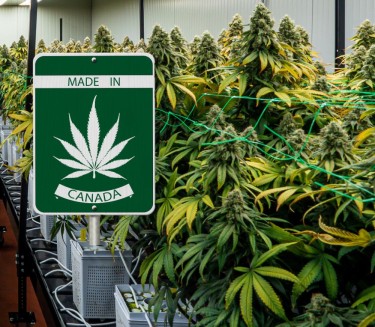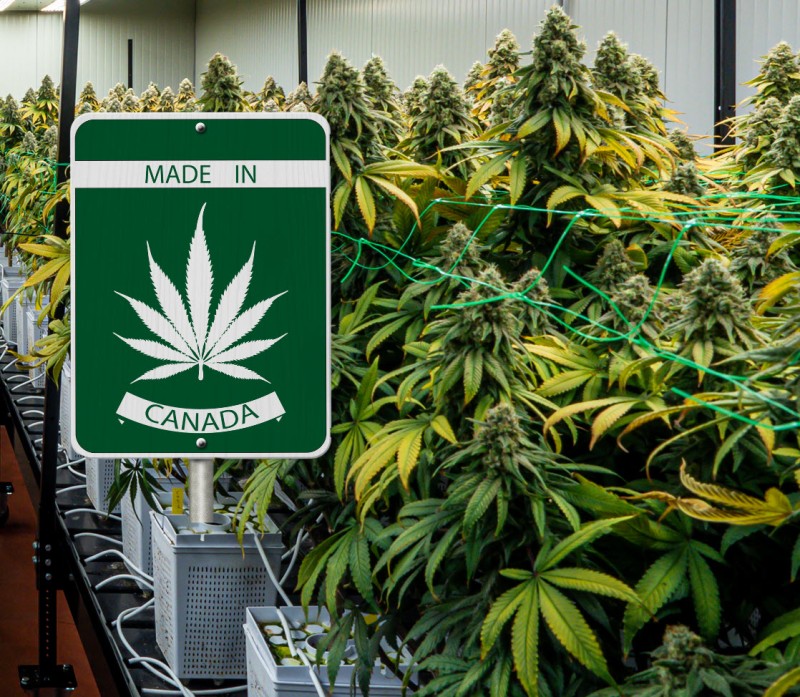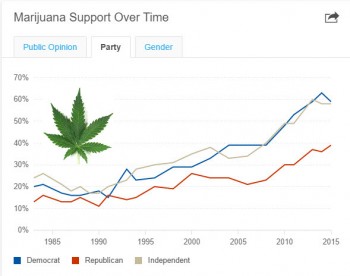
Canada’s decision to legalize recreational marijuana in October 2018 marked a historic moment, making it the second country in the world, after Uruguay, to do so. When Bruce Linton sold the first piece of legal cannabis at 12:01am in Nova Scotia Cannabis.net was there to cover the monumental moment. The goal of legalization was to eliminate the Canadian black market, protect public health, generate significant tax revenue, and regulate the production, distribution, and consumption of cannabis. However, several years into this experiment, it is evident that the journey has not been smooth. Here are some of the key areas where Canada’s weed legalization has encountered significant challenges and what went wrong.
Persistent Black Market
One of the primary objectives of legalization was to eradicate the black market for cannabis. Unfortunately, this has not been entirely successful. This are some of the issues that led to persistent black market:
-
Pricing Issues: Legal marijuana in Canada is often more expensive than its black-market counterpart due to high taxes and regulatory costs. This price disparity makes it difficult for legal businesses to compete, as consumers often opt for cheaper, illegal options.
-
Product Availability and Variety: In the initial stages, the legal market struggled to meet consumer demand due to limited supply and variety. The black market, with its established networks, continued to thrive by offering a wider range of products at lower prices.
-
Slow Licensing Process: The slow rollout of licenses for retail stores limited access to legal cannabis, especially in densely populated areas. This delay allowed the black market to maintain its stronghold, as consumers preferred convenience and availability.
Regulatory Hurdles and Inconsistencies
The regulatory framework for cannabis in Canada is complex and has presented numerous challenges. These challenges include:
-
Complicated Regulations: Canada’s regulatory environment involves federal, provincial, and municipal regulations, which can vary significantly. This complexity creates confusion and compliance challenges for businesses, making it difficult for them to operate efficiently.
-
Stringent Packaging and Advertising Restrictions: Strict rules on packaging and advertising were designed to protect public health but have also hindered legal cannabis companies from effectively marketing their products. These restrictions have limited their ability to compete with the black market, which does not face such constraints.
Public Health and Safety Concerns
Legalization was also intended to protect public health and safety, particularly for young people.
-
Youth Consumption: One of the goals was to reduce youth access to cannabis. However, studies indicate that youth consumption rates have not significantly declined, raising concerns about the effectiveness of current regulations in curbing underage use.
-
Lack of Public Education: Insufficient public education campaigns about the risks and responsible use of cannabis have led to misconceptions and misuse among both new and experienced users. More comprehensive education efforts are needed to inform the public about safe consumption practices.
Economic and Financial Issues
The economic impact of legalization has been mixed, with several financial challenges emerging. These challenges are:
-
High Entry Barriers: The cost of entering the legal cannabis market is prohibitively high due to stringent regulations, licensing fees, and startup costs. This has limited participation to well-capitalized entities, often excluding smaller businesses and entrepreneurs.
-
Banking and Financial Services: Despite legalization, many cannabis businesses still face challenges accessing banking and financial services due to federal regulations. This has forced some businesses to operate on a cash-only basis, which poses security risks and financial management difficulties.
Supply Chain Challenges
The cannabis industry has also faced significant supply chain issues which such as production and supply problems and inventory management.
-
Production and Supply Problems: Early on, the industry struggled with production and supply chain challenges, resulting in shortages and inconsistent product quality. These issues were exacerbated by the strict regulatory environment that slowed down the establishment of cultivation and processing facilities.
-
Inventory Management: Overproduction in some areas led to a surplus of cannabis, causing significant financial losses for producers. This imbalance between supply and demand highlights the challenges of accurately forecasting market needs in a newly legalized industry.
Impact on Indigenous Communities
Indigenous communities have been uniquely impacted by cannabis legalization, and several missteps have exacerbated these challenges:
-
Inadequate Consultation and Inclusion: Indigenous communities have voiced concerns about being left out of the consultation and decision-making process for cannabis legalization. This oversight has resulted in missed opportunities for economic development and has fueled tensions between Indigenous groups and government authorities.
-
Jurisdictional Conflicts: There have been conflicts over jurisdiction and control of cannabis operations on Indigenous lands, leading to legal battles and uncertainty that have hampered progress.
Enforcement and Compliance
Ensuring compliance and enforcing regulations have proven challenging in the following ways:
-
Resource Allocation: Law enforcement agencies have faced challenges in reallocating resources to focus on regulating and policing the legal cannabis market while continuing to combat the black market.
-
Illegal Dispensaries: Many illegal dispensaries continue to operate, particularly in large urban centers. The enforcement of shutting down these operations has been inconsistent, allowing them to persist and compete with legal businesses.
Social Equity Issues
Despite promises of social equity, the benefits of legalization have not been evenly distributed. Some social equity issues include:
-
Disproportionate Impact on Marginalized Communities: Marginalized communities, which were disproportionately affected by cannabis prohibition, have seen little improvement in their opportunities or economic benefits from the legal market.
-
Expungement of Records: Efforts to expunge the criminal records of those convicted of cannabis-related offenses before legalization have been slow and insufficient, leaving many individuals with lingering legal and social consequences.
Recommendations for Improvement
To address these issues and improve the effectiveness of cannabis legalization in Canada, several steps can be taken:
-
Adjust Pricing and Taxation Policies: Reducing taxes and regulatory costs can help make legal cannabis more competitively priced compared to the black market. Implementing flexible tax rates that can adjust based on market conditions may help stabilize the legal market and reduce black market activity.
-
Streamline Regulatory Framework: Creating a more cohesive and simplified regulatory framework across federal, provincial, and municipal levels can reduce confusion and compliance costs for businesses. Revisiting packaging and advertising restrictions to balance public health concerns with the need for legal businesses to effectively market their products is also crucial.
-
Enhance Public Education: Launching comprehensive public education campaigns about the risks, benefits, and responsible use of cannabis can help address misconceptions and promote safe consumption. Implementing targeted education programs for youth to prevent underage consumption and inform them about the potential risks is also essential.
-
Support Economic Participation: Reducing licensing fees and providing financial support for small businesses and entrepreneurs can encourage broader participation in the legal cannabis market. Advocating for better access to banking and financial services for cannabis businesses to ensure they can operate safely and efficiently is also important.
-
Improve Supply Chain Management: Enhancing data collection and market analysis to improve forecasting of supply and demand can help balance production and avoid surpluses or shortages. Strengthening quality control measures to ensure consistent product quality and safety is also necessary.
-
Include Indigenous Communities: Ensuring meaningful consultation and inclusion of Indigenous communities in the cannabis industry to promote economic development and respect jurisdictional rights is critical. Providing targeted support and resources for Indigenous cannabis operations to thrive in the legal market is also needed.
-
Strengthen Enforcement and Compliance: Ensuring consistent enforcement against illegal dispensaries to protect the legal market is important. Allocating sufficient resources to law enforcement to balance the regulation of the legal market and combating the black market is also necessary.
-
Promote Social Equity: Creating programs and initiatives to ensure marginalized communities benefit from the legal cannabis market is crucial. Accelerating efforts to expunge criminal records for cannabis-related offenses to reduce the social and legal impacts on affected individuals is also essential.
Conclusion
Canada’s journey with cannabis legalization has been a groundbreaking and complex experiment. While there have been significant achievements, several challenges remain that need to be addressed to fully realize the benefits of legalization. By adjusting pricing and taxation policies, streamlining regulations, enhancing public education, supporting economic participation, improving supply chain management, including Indigenous communities, strengthening enforcement, and promoting social equity, Canada can overcome these hurdles and build a more effective and inclusive cannabis industry. This will not only ensure the success of legalization but also serve as a model for other countries considering similar paths.







